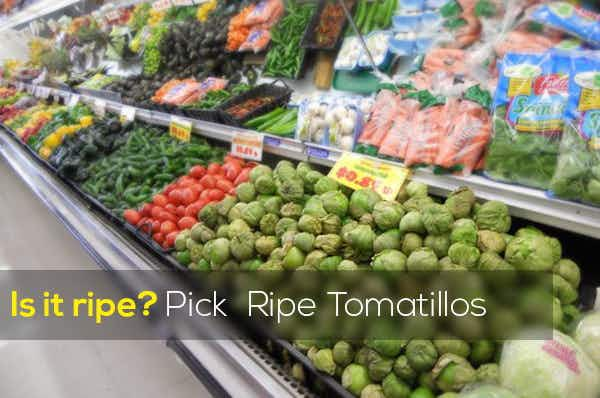
How to choose ripe tomatillos
- Size matters: Look for small tomatillos. Smaller fruits tend to be riper and sweeter.
- Color check: A ripe tomatillo will be bright green in color. Green tomatillos will be tart and acidic, but this isn't a bad thing. In fact, tomatillos are usually called for in a dish to add that acidity and tartness! If you prefer your tomatillos a little sweeter, look for overripe fruits, which will be pale yellow or light green.
- Pay attention to the husk: Pick a tomatillo that has a bright-green husk. The husk should feel tacky when you touch it. If you notice that the husk is dry or has turned a yellow color, it's more than likely passed its prime. As a general rule of thumb, your tomatillo should fill its husk completely—the husk shouldn't be too balloon-like, large or loose.
- Open them up: Open up the husk just slightly to peek at the flesh of the fruit beneath it. The tomatillo should be firm and bright green. Toss the fruit back if it looks dried out, shriveled up or blemished.
- Give them a squeeze: Squeeze that tomatillo gently in your hands. It should feel firm—the flesh shouldn't yield much when you put pressure on it. What if your tomatillo is soft? That means it's likely spoiled and you should put it back.
How to store
Don't peel the husks from your tomatillos if you don't plan on using them right away. Store them, husks and all, on your kitchen counter, in a hanging basket or in your refrigerator. They should last for up to two months. Do not put them in an airtight container—unless you prefer mold on your fruit. Tomatillos need lots of air or else they will ripen too quickly. Want to store them even longer? Husk the tomatillos, wash them, pat them dry and then pop them into a zipper baggie. You can keep them in the freezer for up to six months!
How to prep tomatillos
Although tomatillos are easy to cook with, they do require a bit of preparation. Peel off the husk before you cook them. The fruit inside is covered with a sticky residue that must be washed off before eating. A little bit of diluted white vinegar should do the trick. Just be sure you don't get any of the sticky stuff on your hands—it's a pain to remove.
How to use tomatillos
Savory: For a savory meal, blend tomatillos with green chile peppers and spices to make homemade salsa verde, add blended tomatillos to your favorite enchilada recipe, or roast your tomatillos and cook them in your slow cooker along with a pork tenderloin roast, onions, garlic and tomatoes.
Sweet: You may not think desserts and tomatillos go together, but think again! Blend up tomatillos to make a tomatillo-lime jam, drizzle sweetened tomatillo sauce over chocolate cake, or make a tomatillo margarita.


Tell us what you think